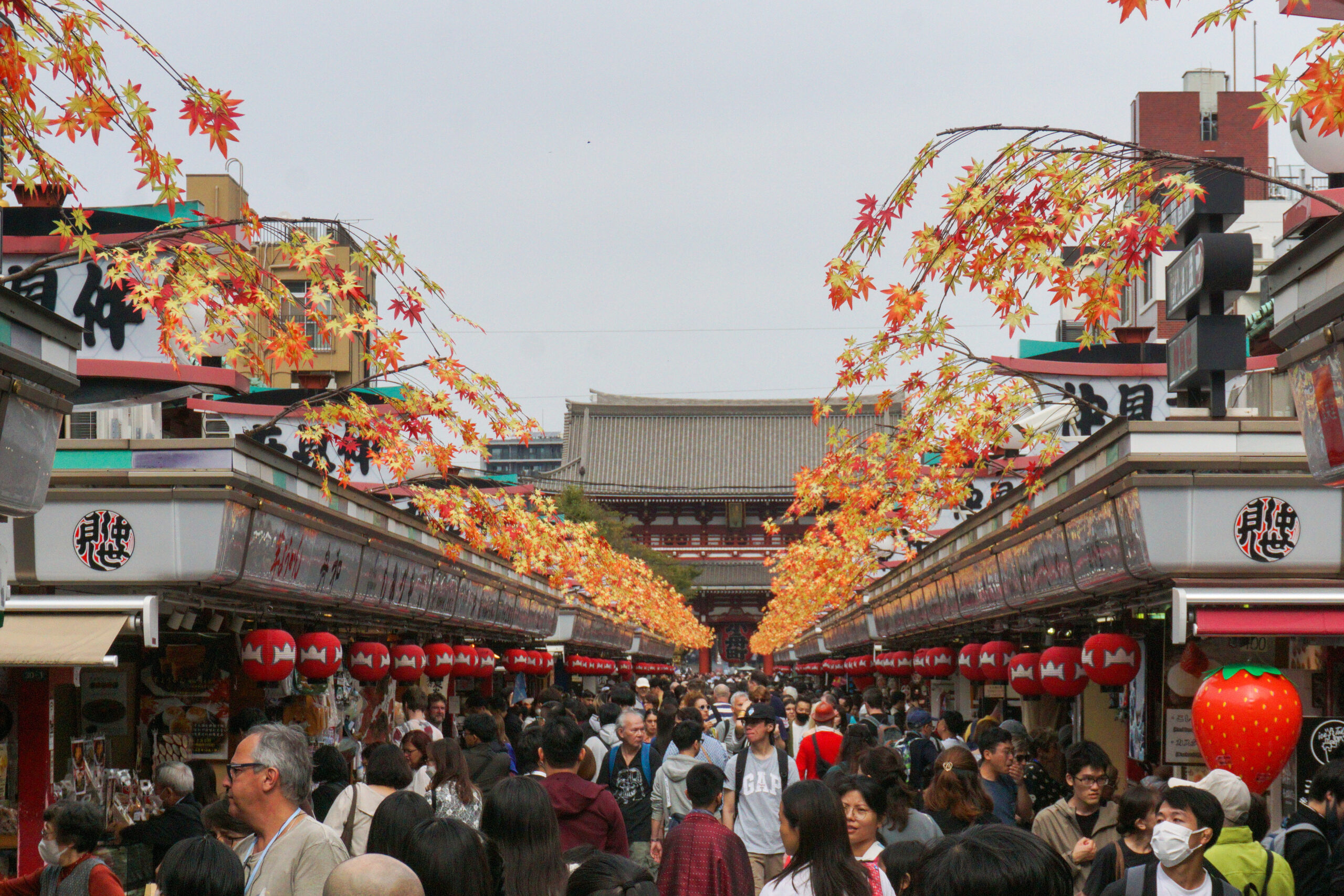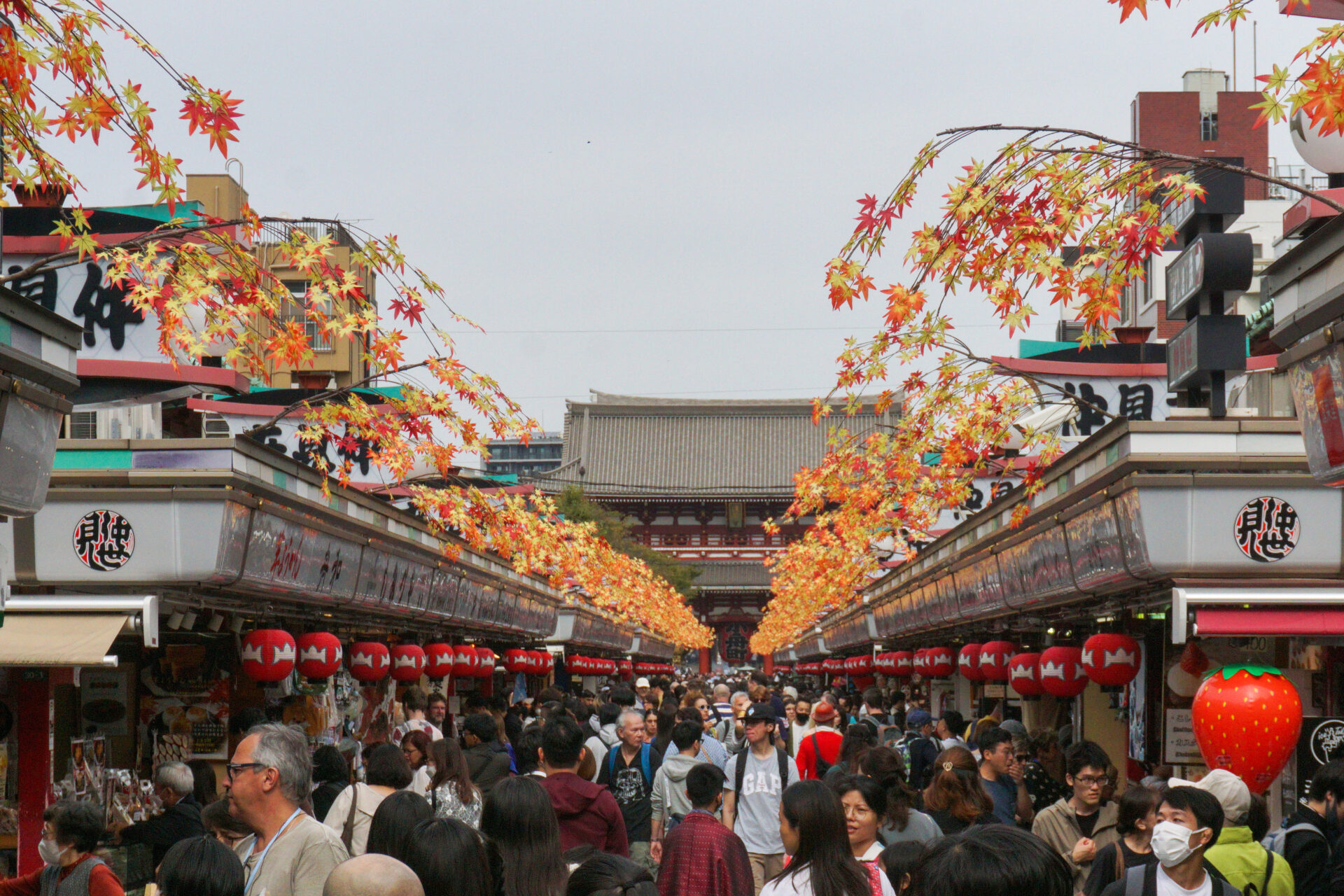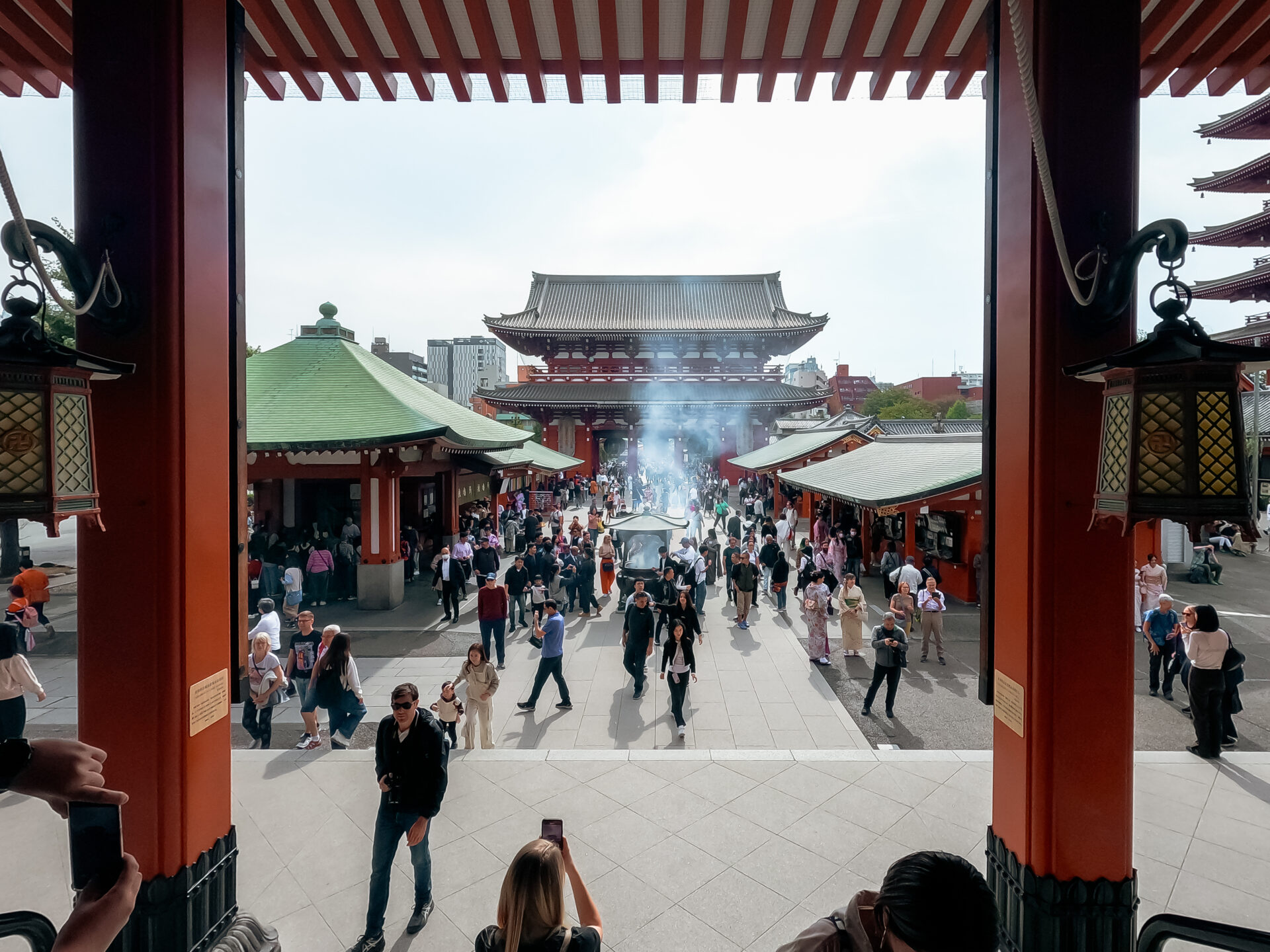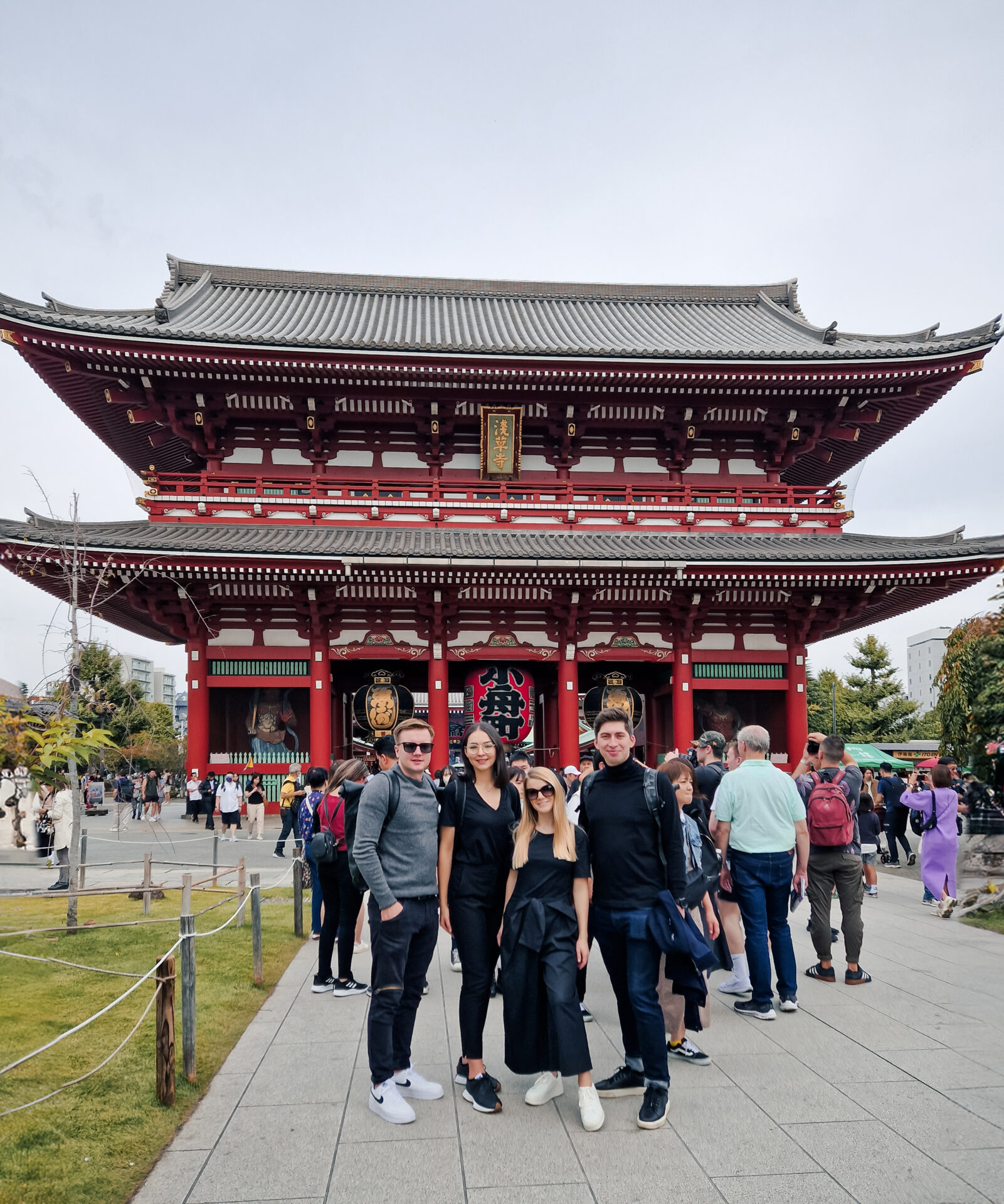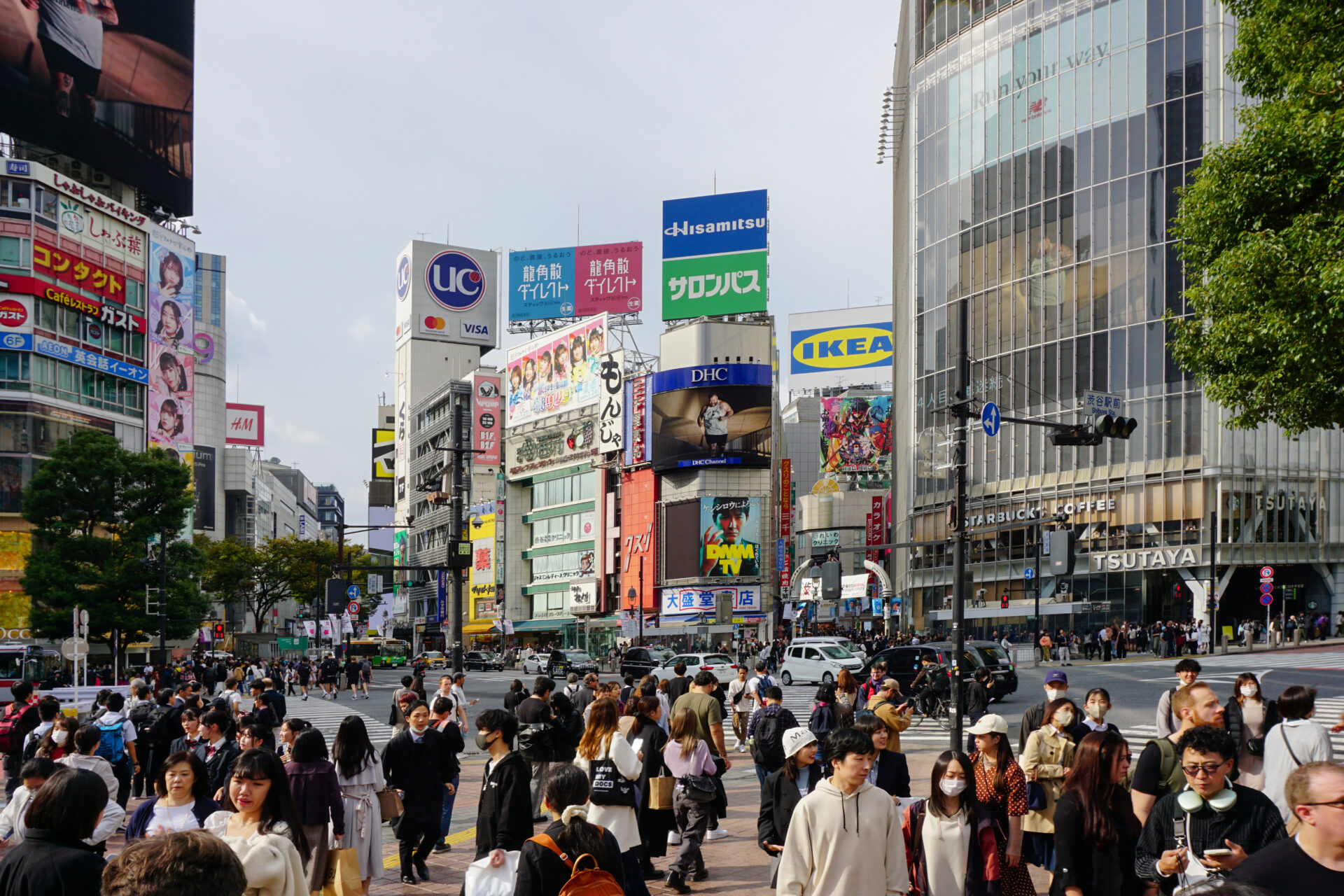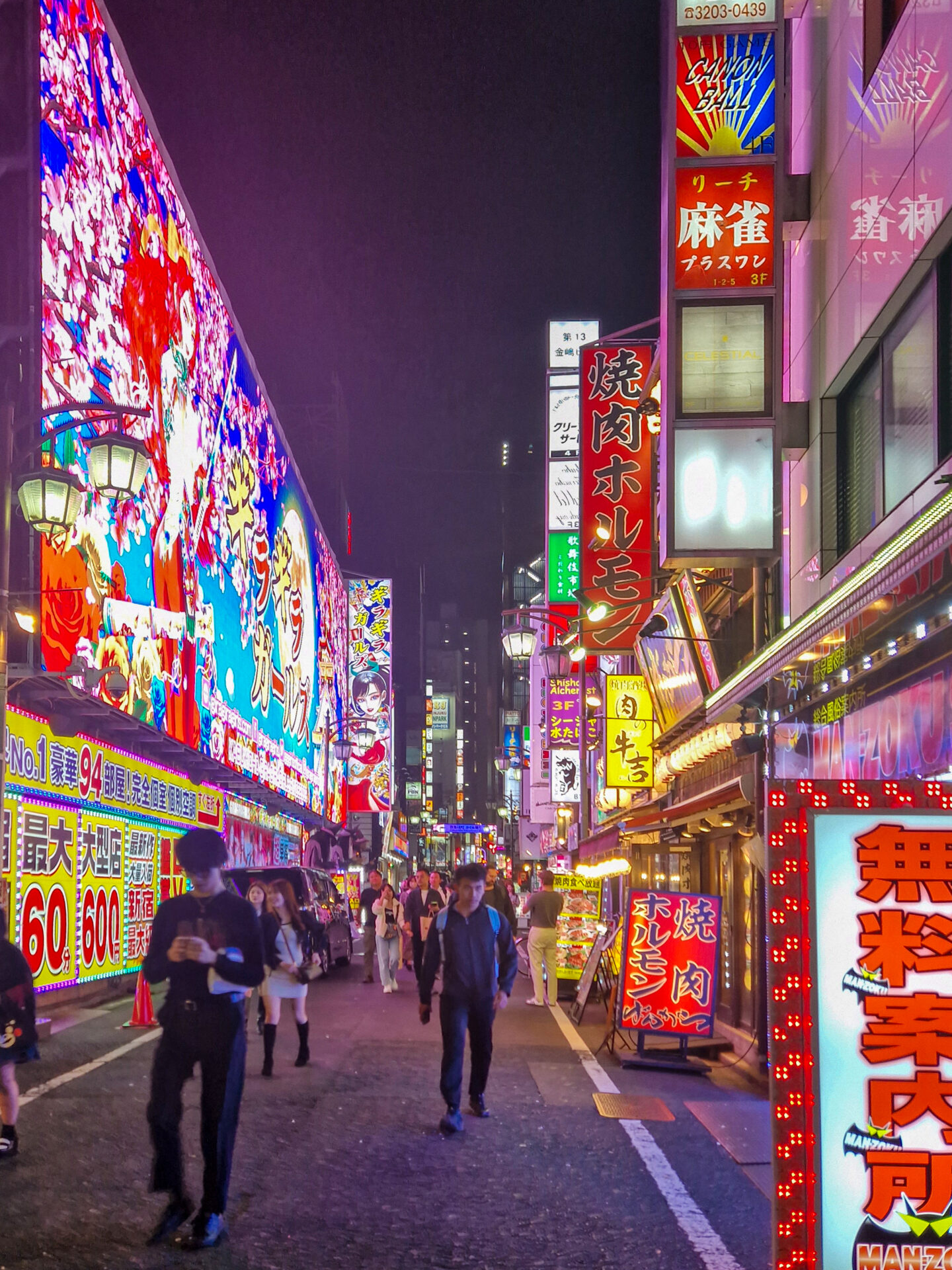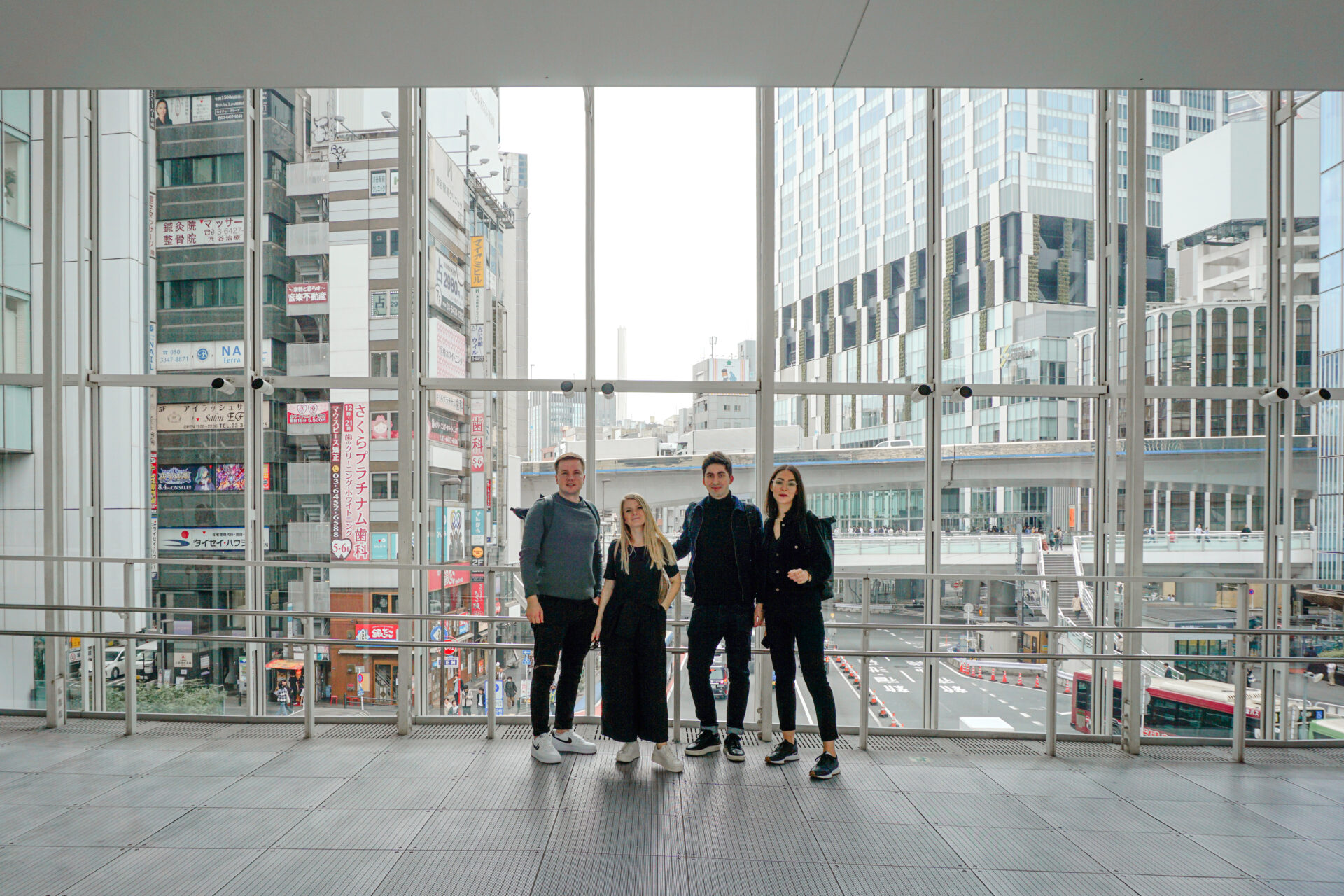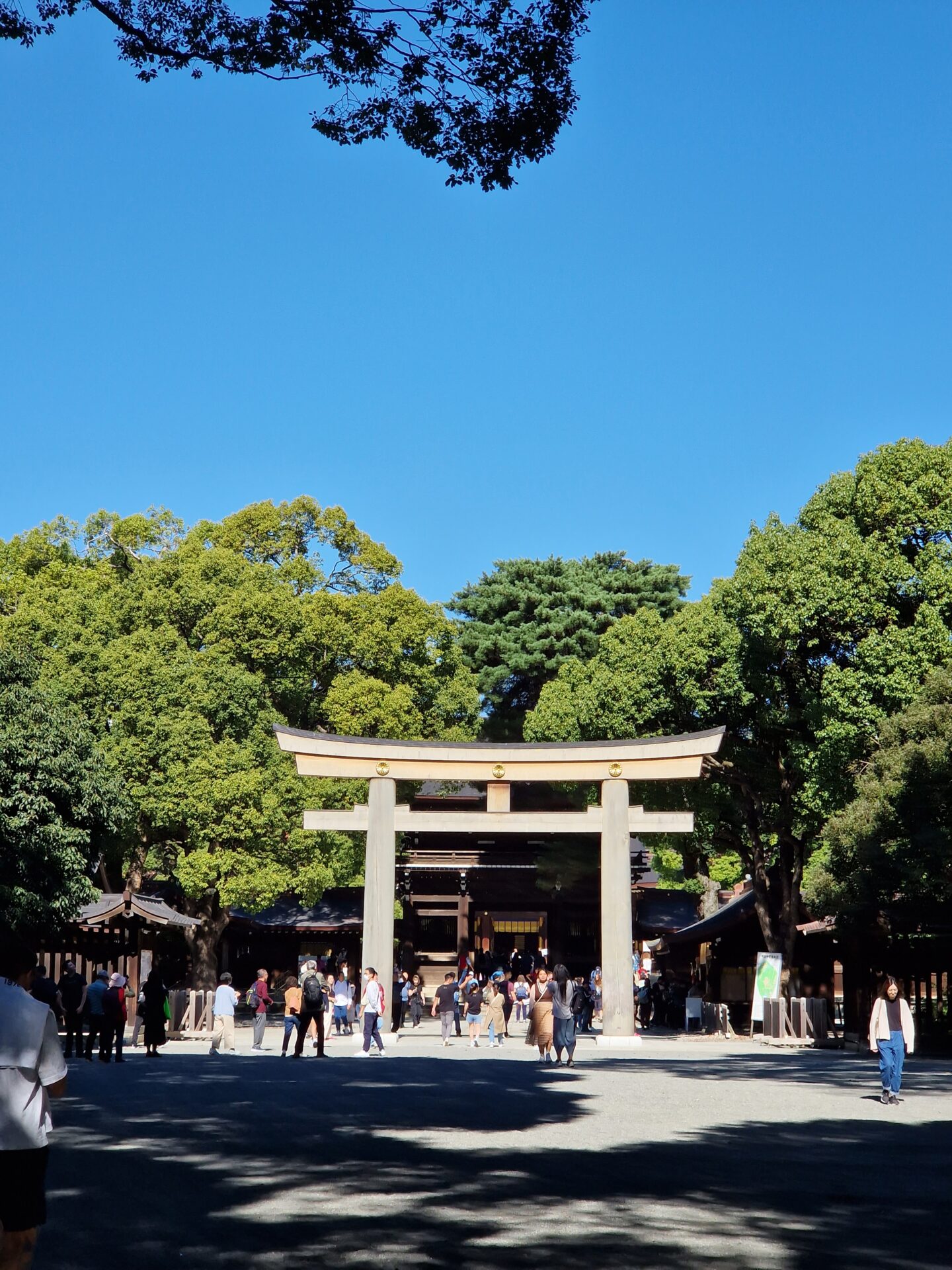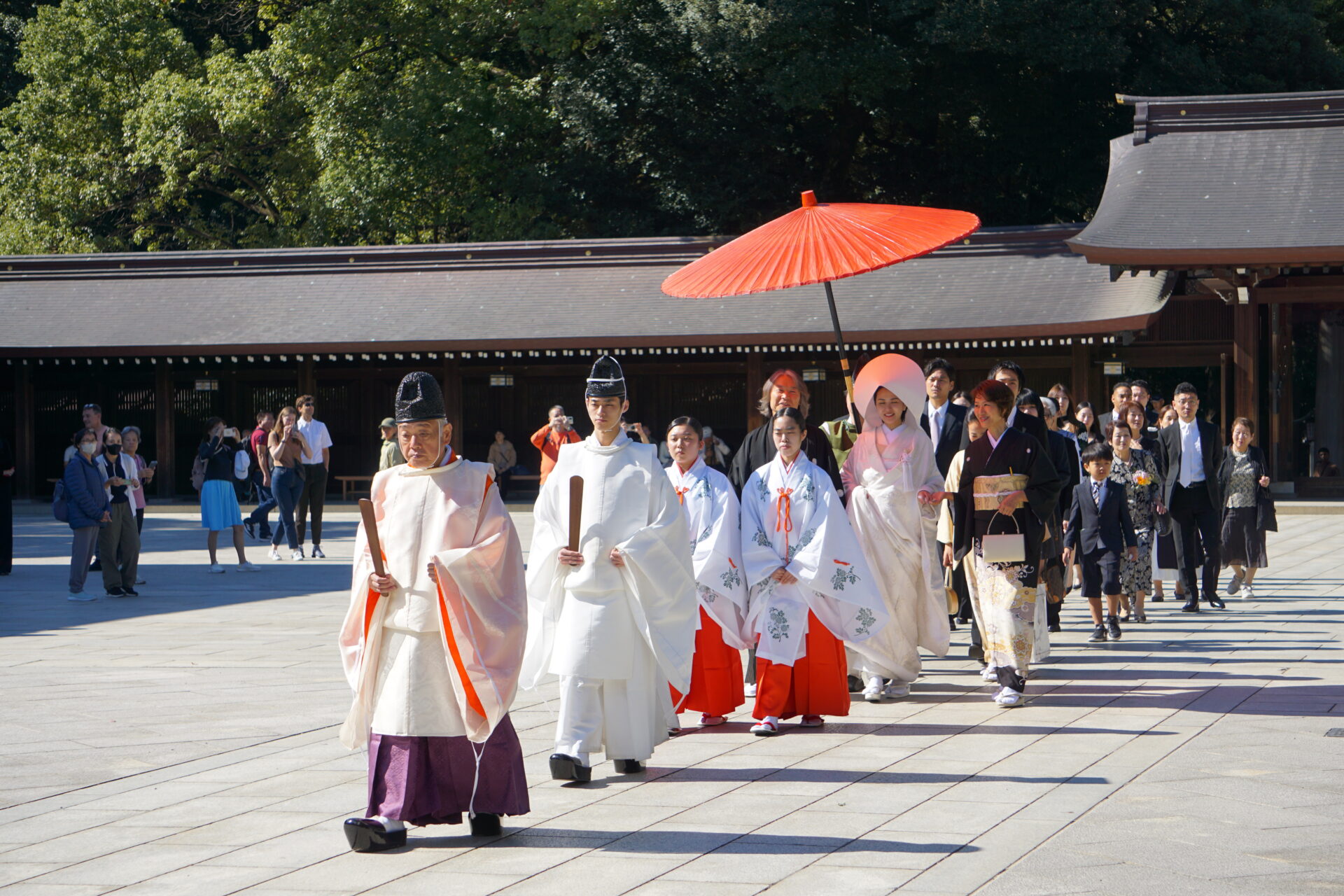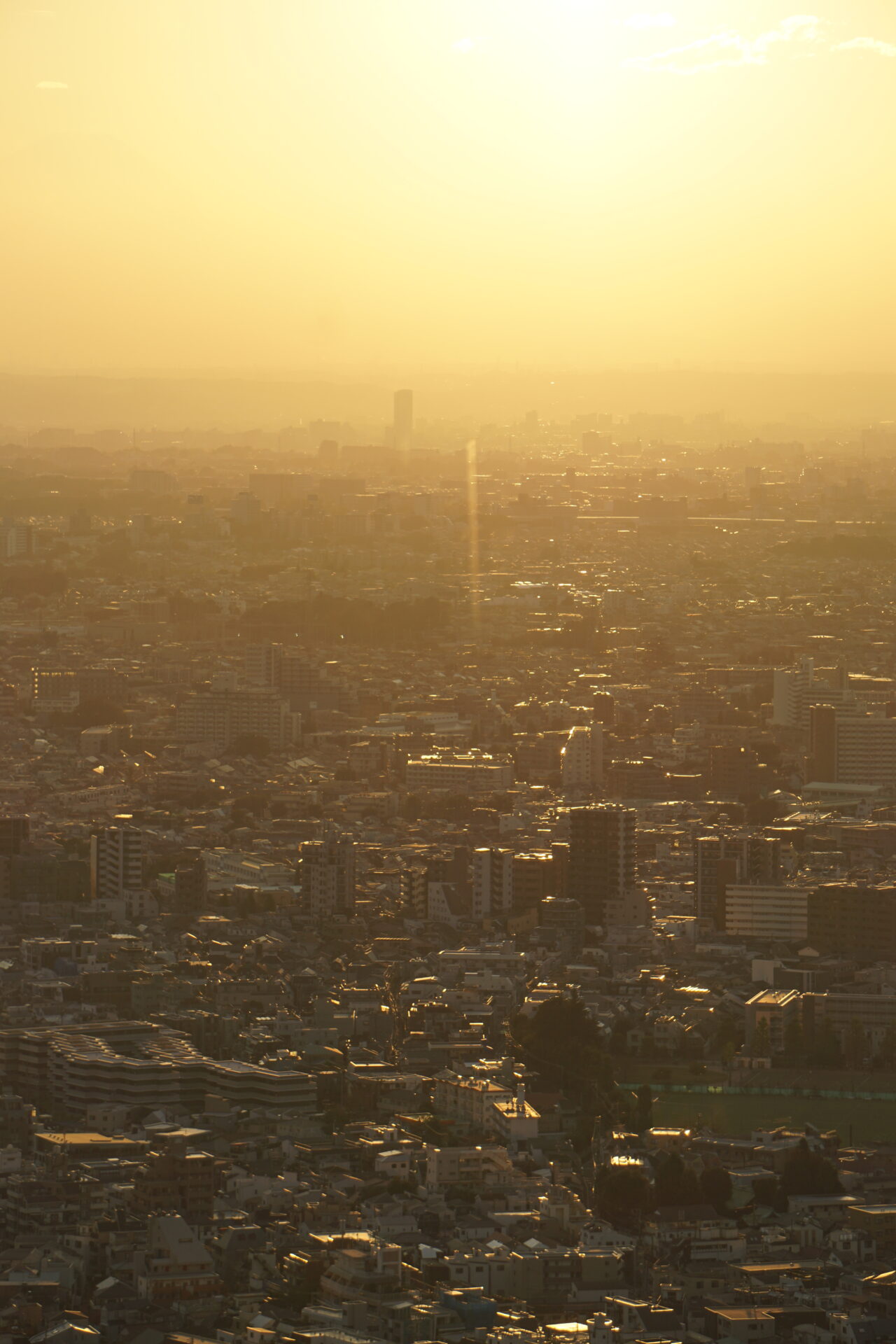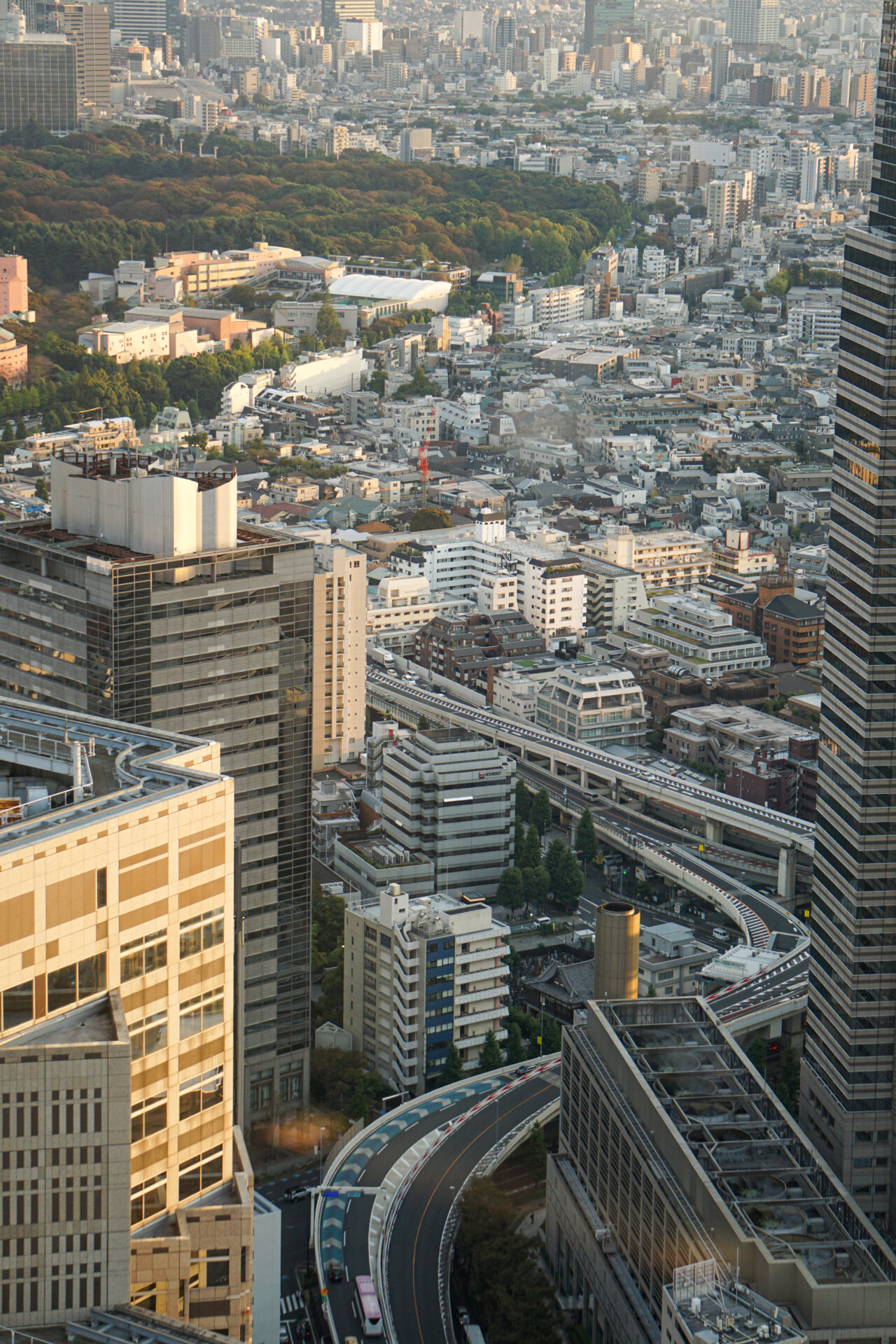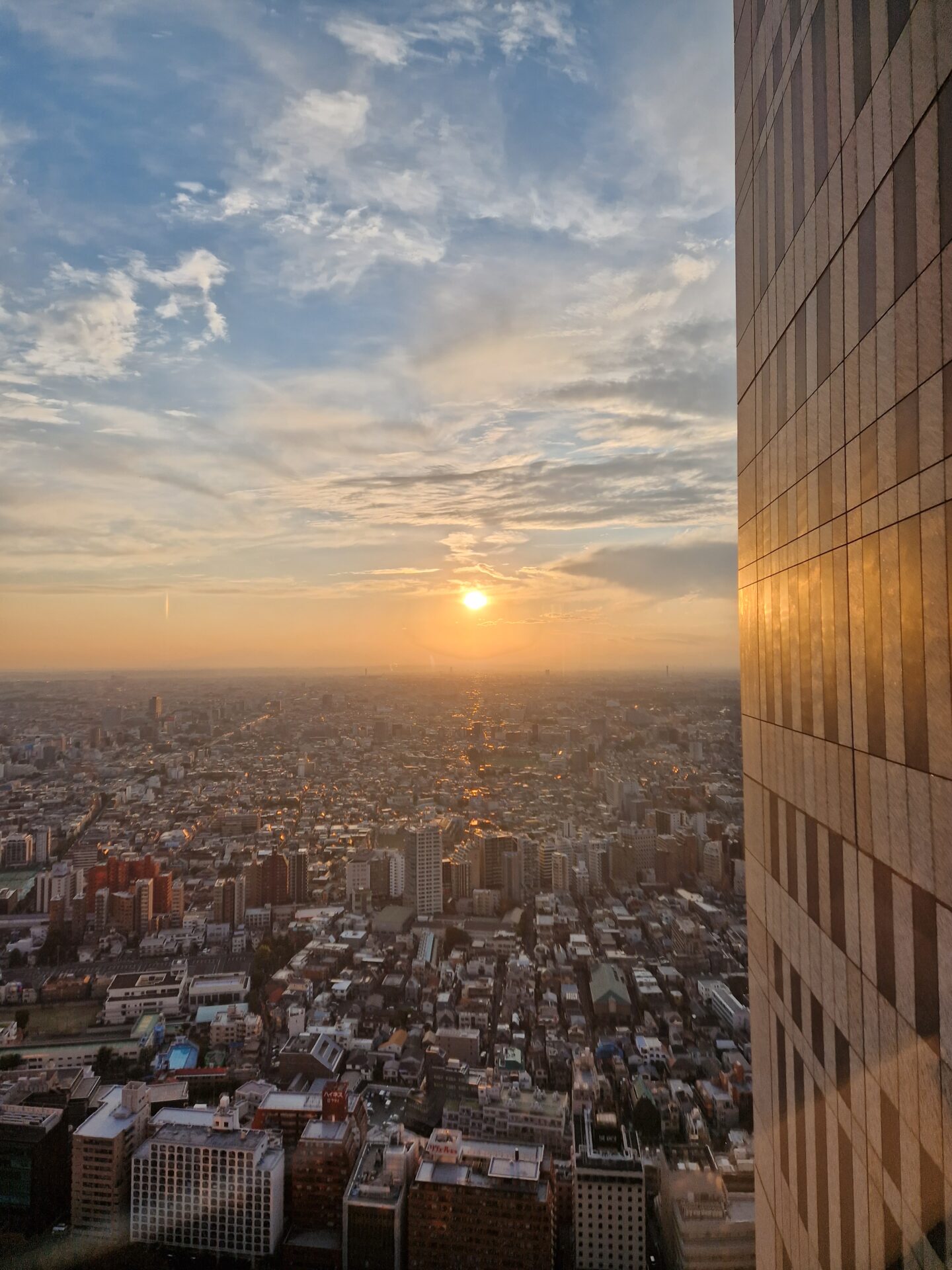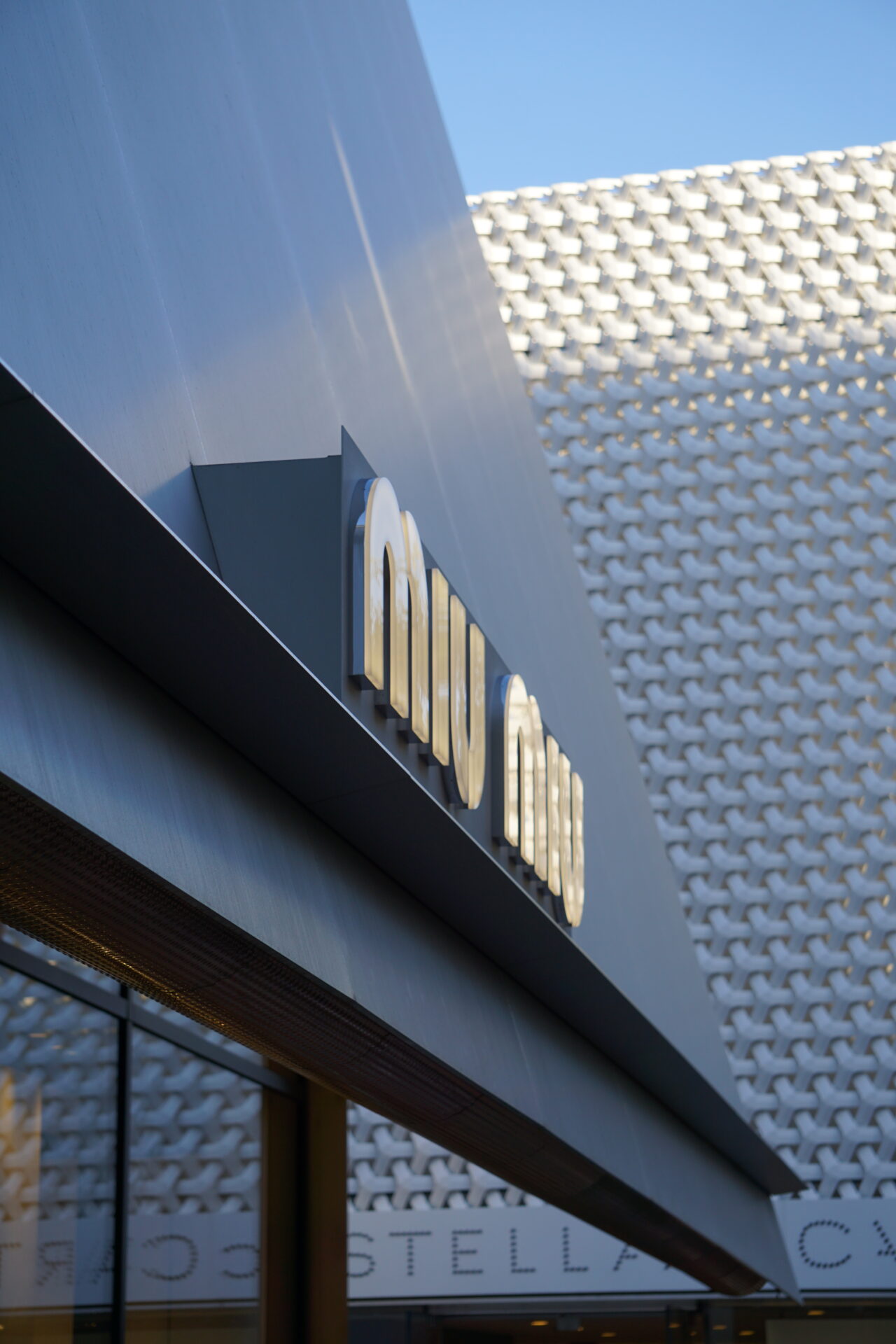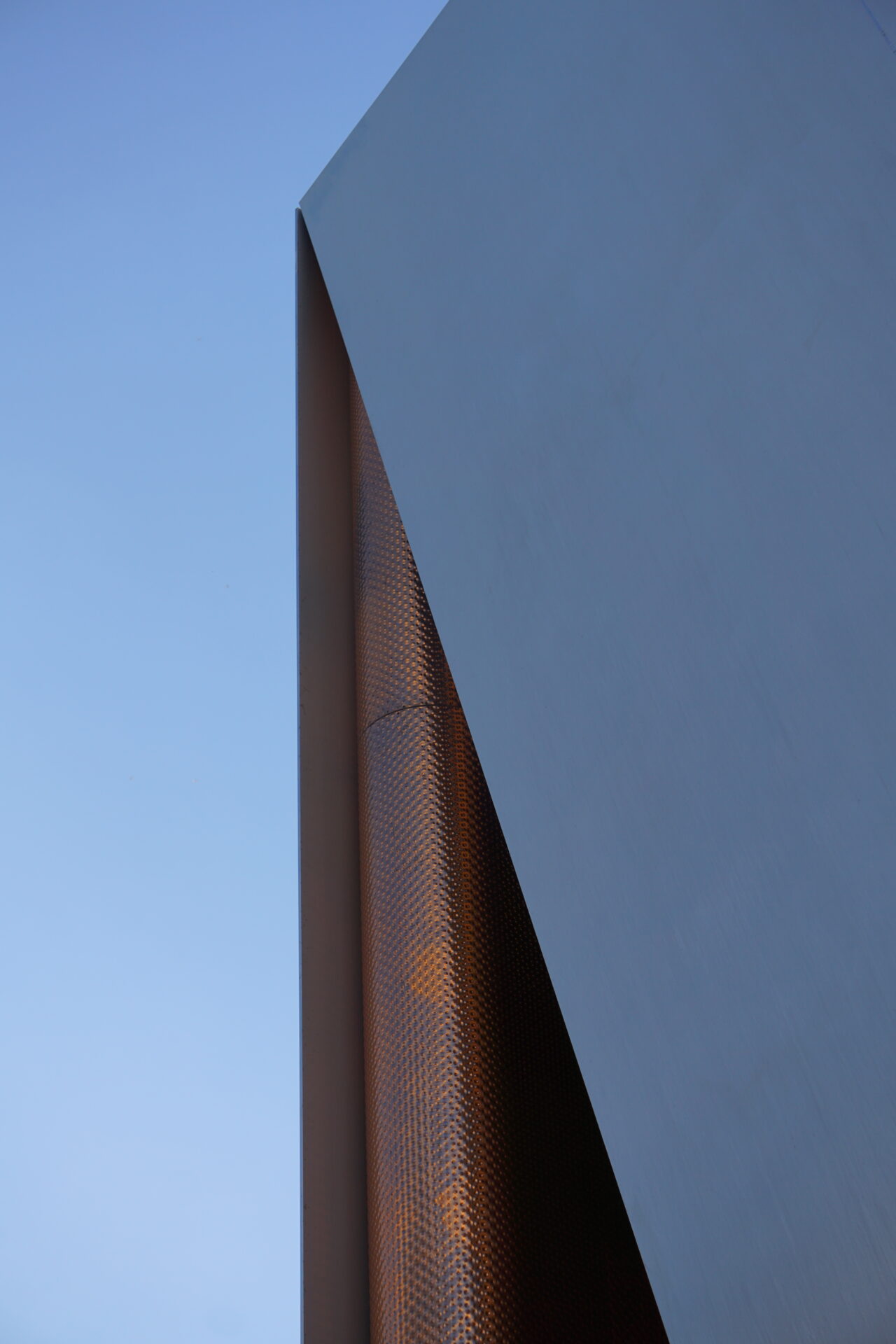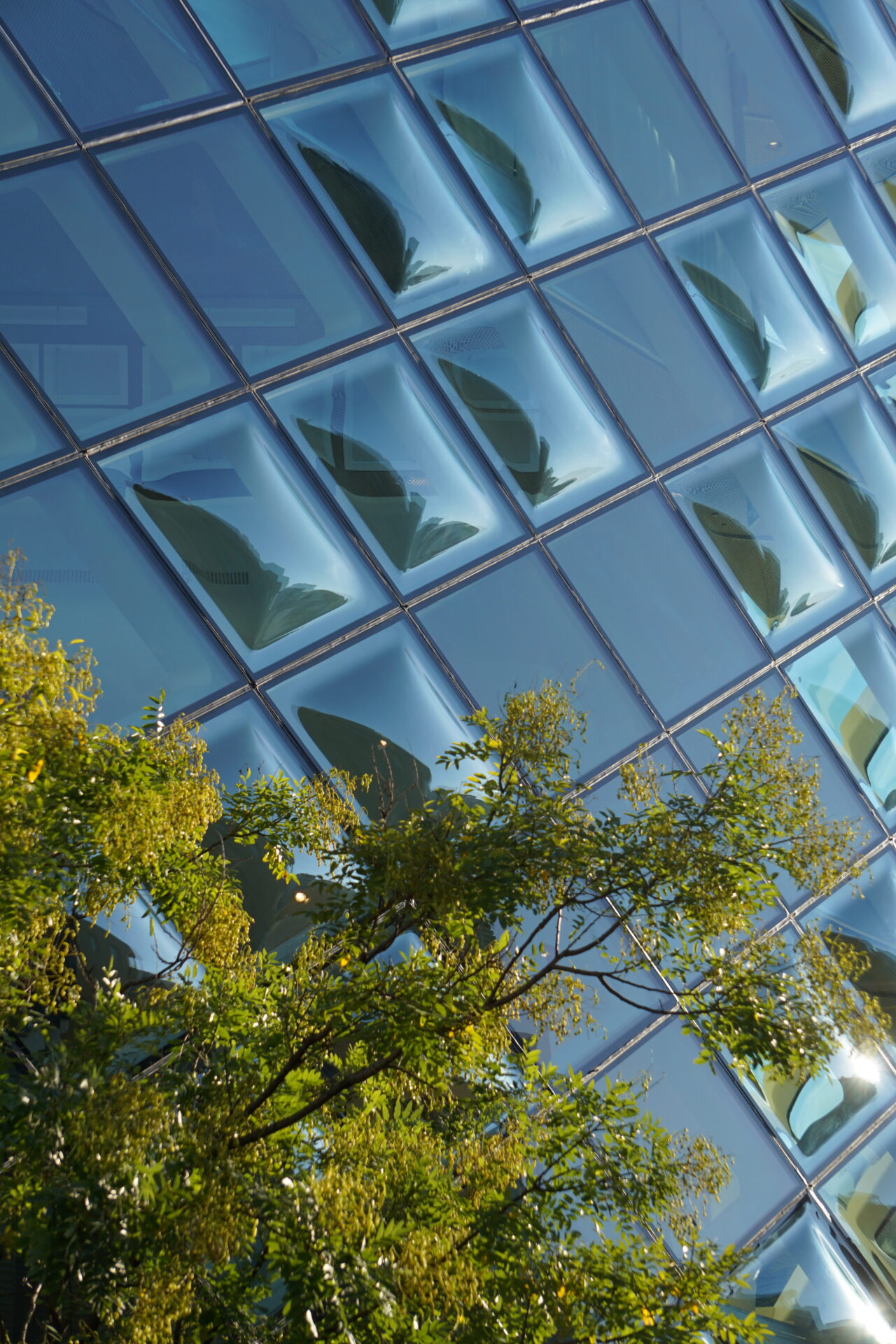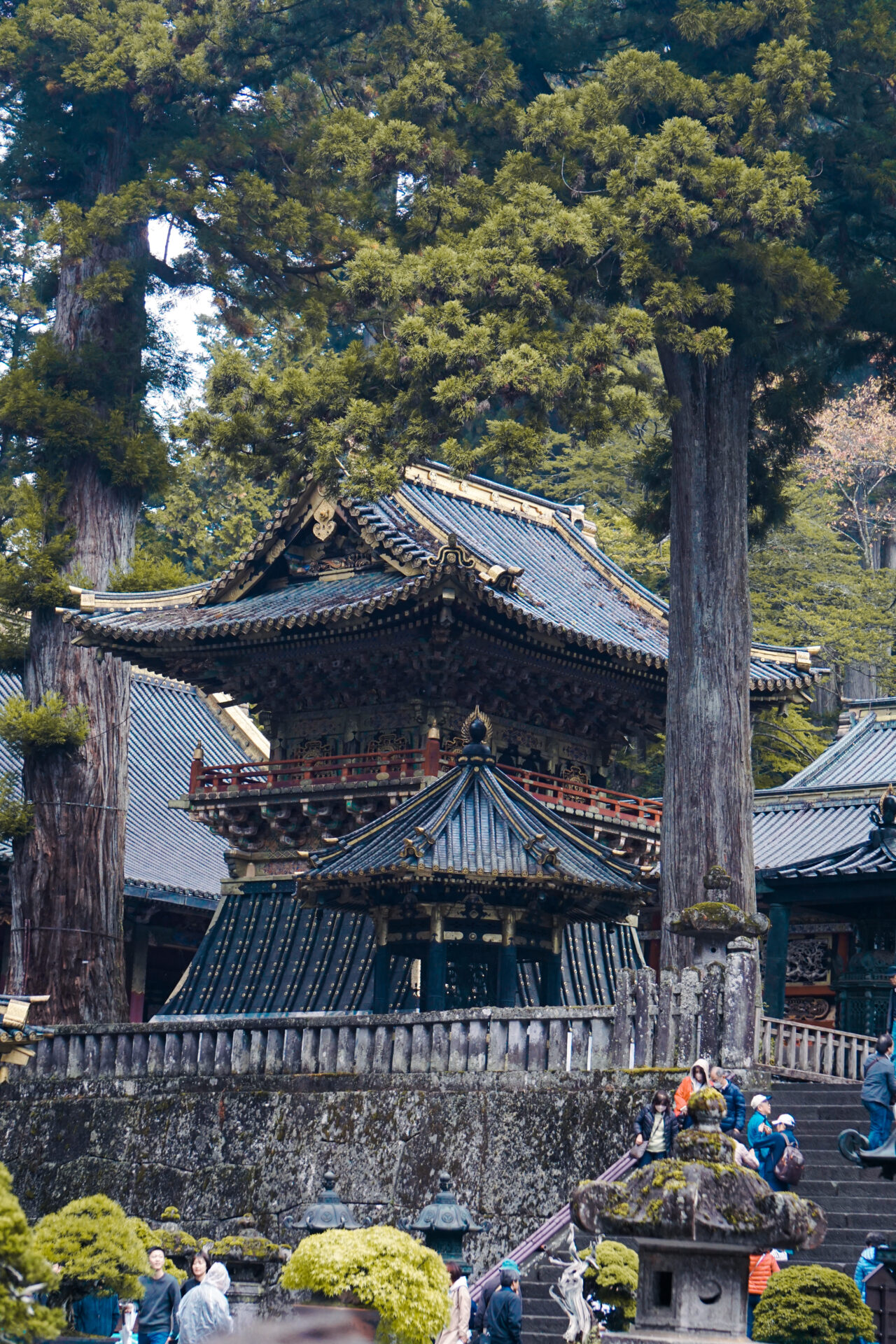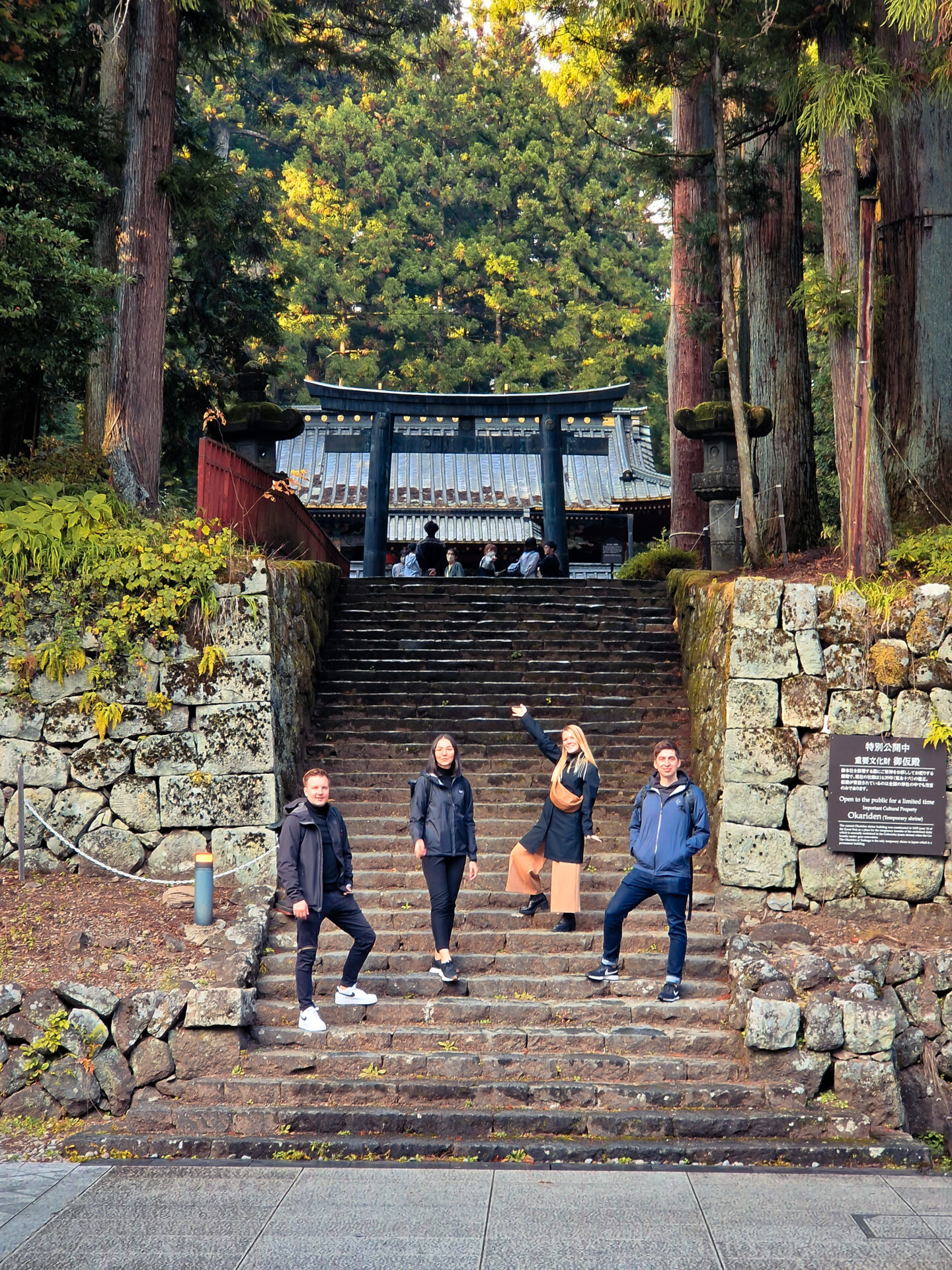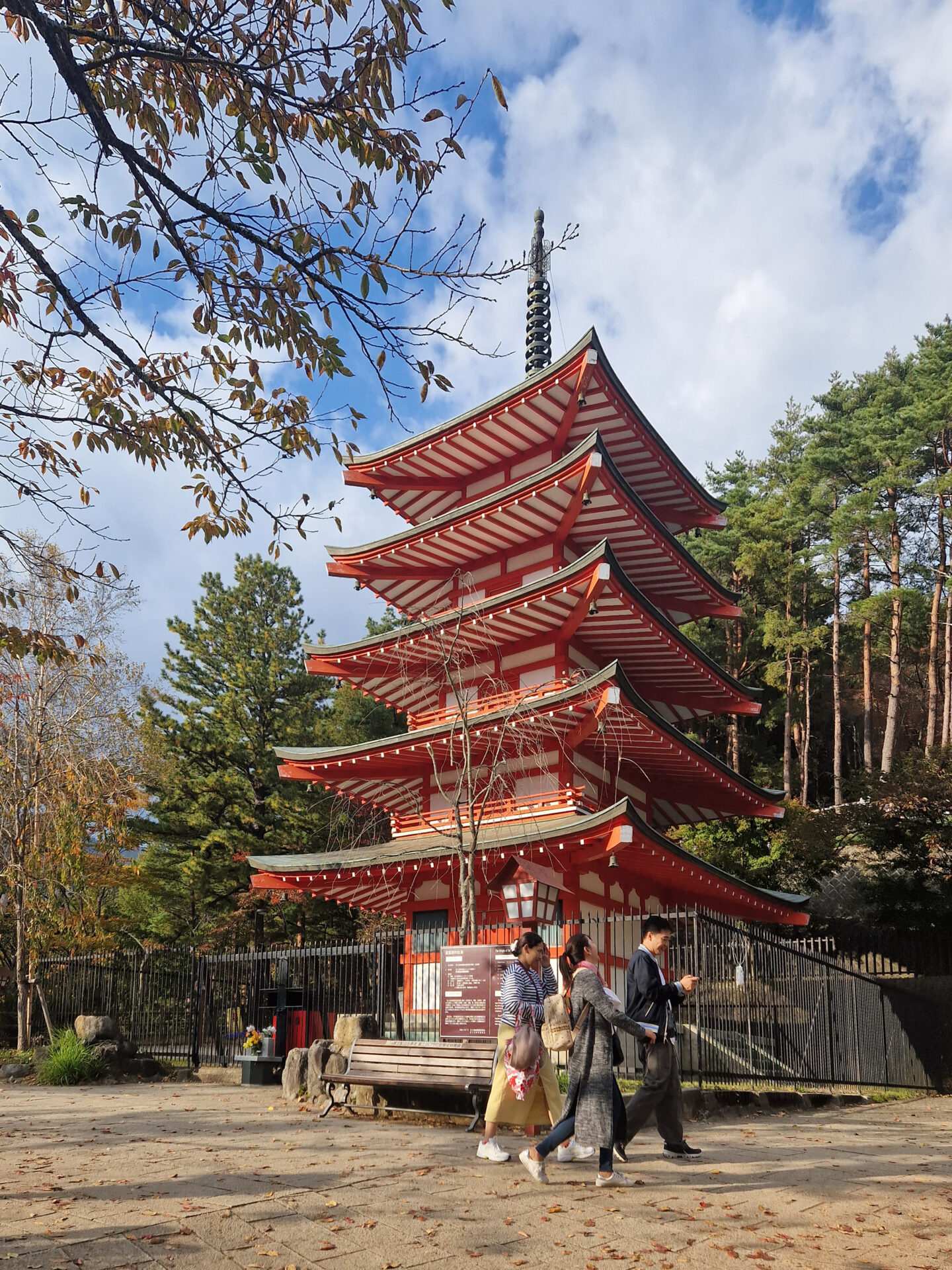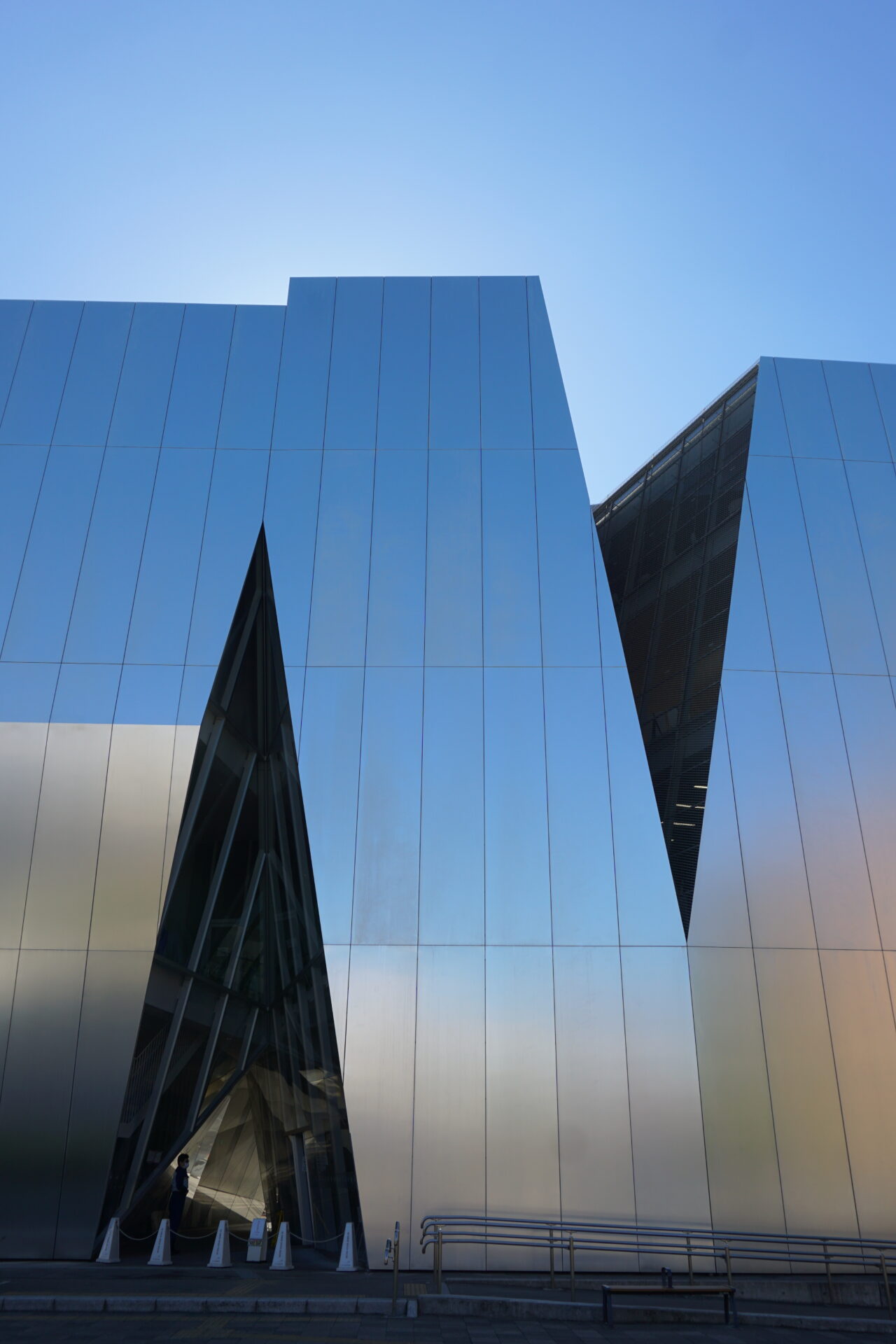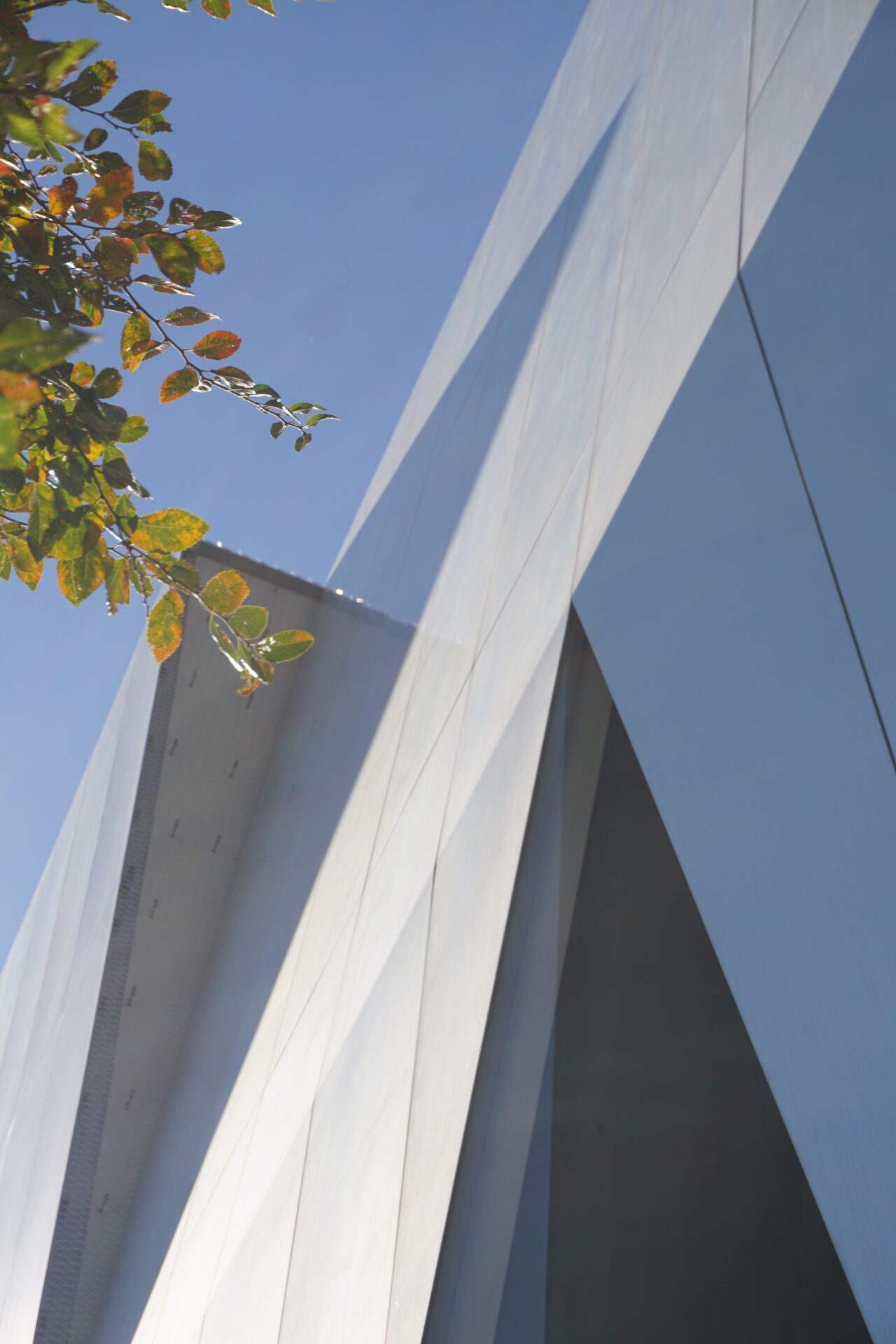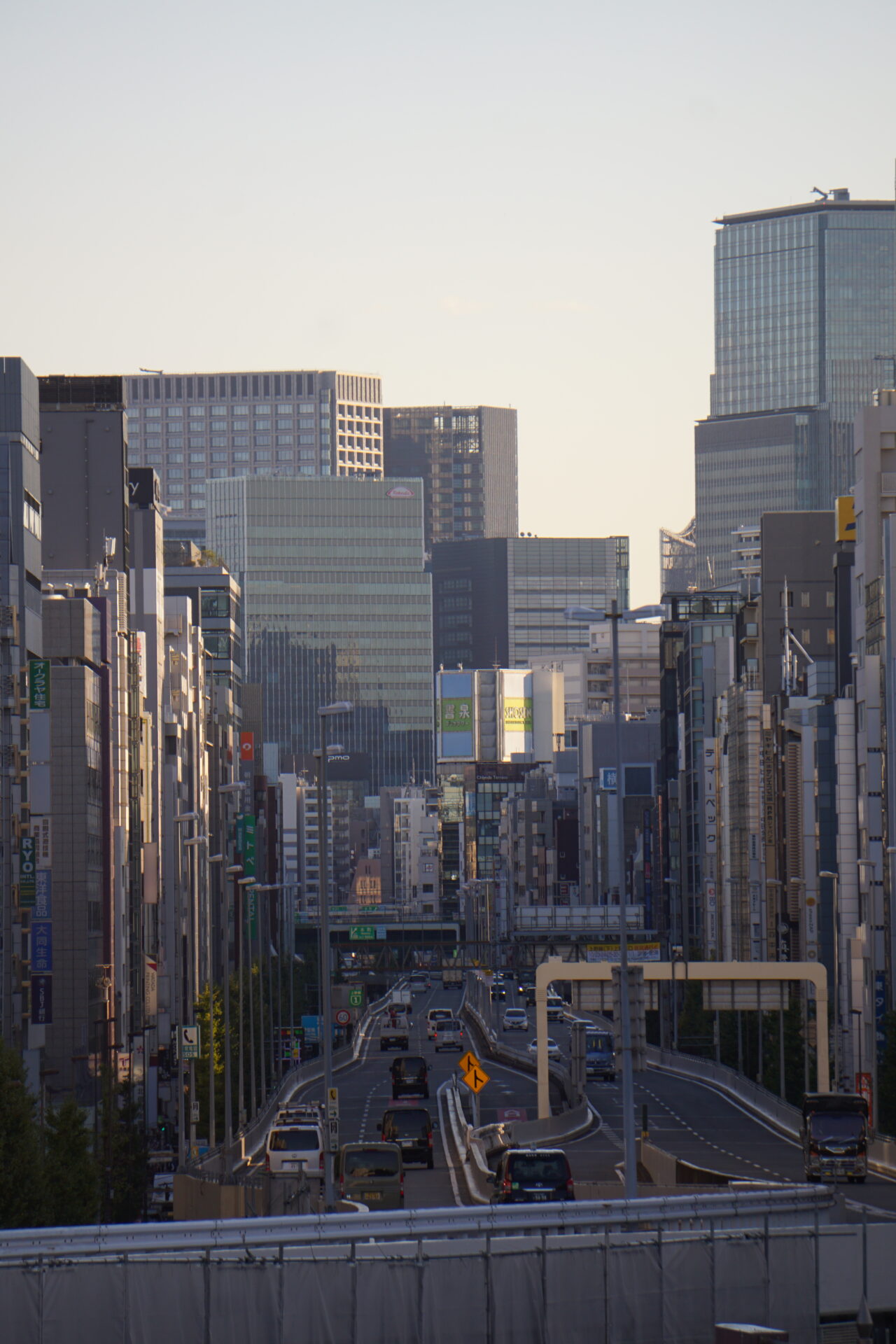The KXM studio delighted the judges of the TDA competition with the idea of revitalizing residential blocks from the 1960s and 1970s. The prize of the competition was a trip to Tokyo. We present an account of the trip full of inspiration and wonderful architecture.
Winning the contest was a chance for them to visit Japan for the first time. The cherry blossom country attracts not only with its rich culture and history, but also with its futuristic architecture, which perfectly corresponds with traditional buildings and tropical vegetation. Architects Klaudia Gołaszewska, Marek Grodzicki, Kinga Grzybowska and Michał Hondo of the KXM studio will take you on a short journey through Japan.
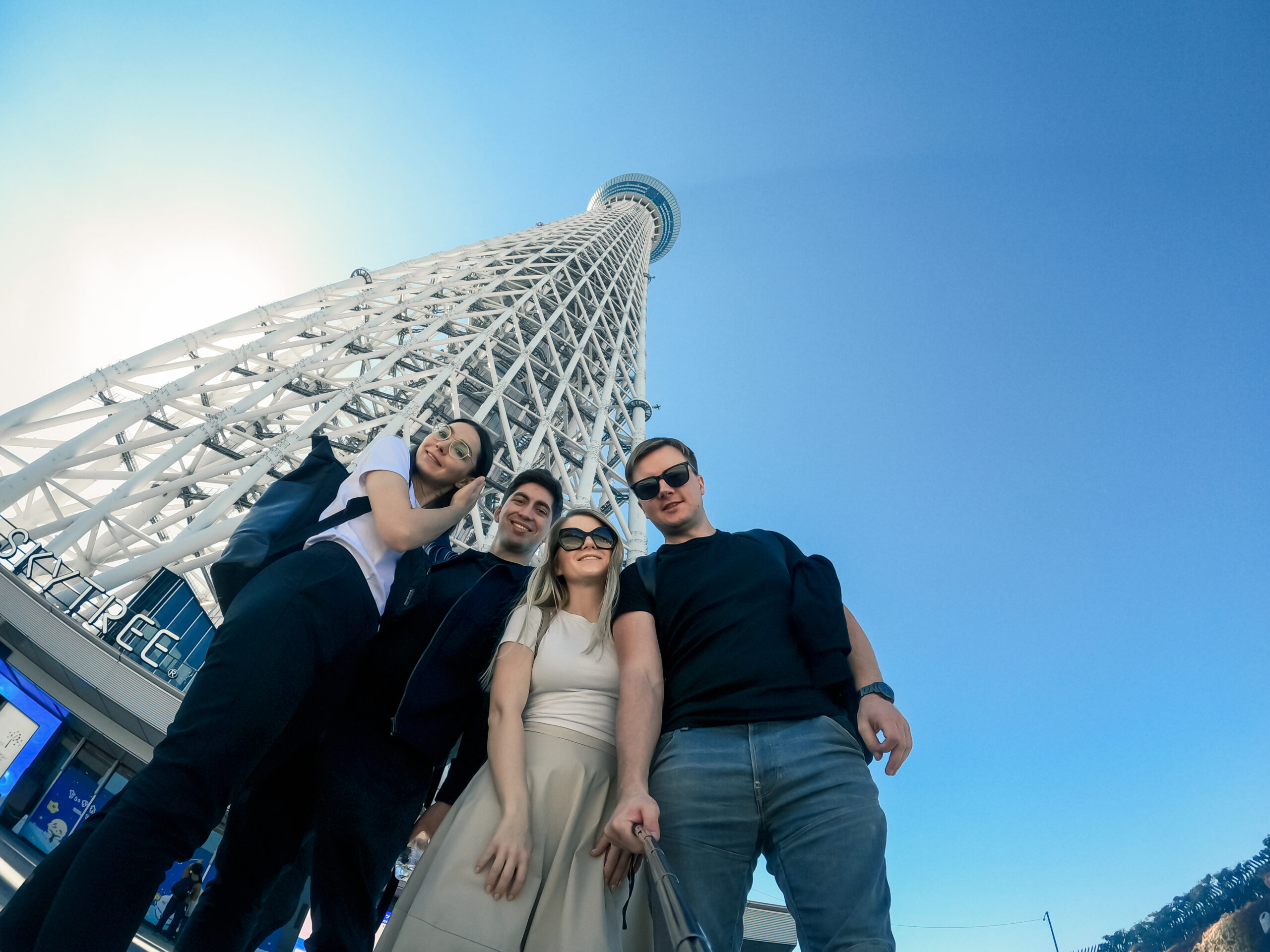
– We began our tour of Tokyo with a walk under Tokyo Skytree, a television and observation tower that measures as much as 634 meters and is the tallest building in Tokyo. We then headed to the Asakusa district, where we visited the iconic Asakusa Tourist Information Center building designed by architect Kengo Kuma. From the observation deck you can see Nakamise-dori Street perfectly. This is an atmospheric shopping street leading to Sensō-ji Temple. The oldest Buddhist temple in Tokyo impressed us with its richness of detail and color. The wafting smell of incense smoke and Japanese women walking around in kimonos created a unique atmosphere that we will remember for a long time. – Says Kinga Grzybowska of KXM Architects.
The layered nature of the streets, the “floors” of the city and the population density in Tokyo is remarkable. From the point of view of the organization of the metropolis, it works quite well – the ease of access by subway and car at this scale is surprising. One day, together with a guide, we had to get to the other side of the city, we moved on an expressway elevated to the +1 level, close to our destination we turned off to local roads,” – adds Klaudia Golaszewska of KXM Architects.
– We took the subway to Shibuya, where the world’s busiest intersection is located. Up to 3,000 people cross to the other side when the lights change. – Michał Hondo adds – We then headed to Shinjuku – this is the most densely populated district of Tokyo, where the busiest train station in the world is located. We had the “pleasure” of getting lost in its labyrinths and feeling the scale of this establishment firsthand. The district is dominated by skyscrapers depicting Japan’s power and metropolitan lifestyle.
– From the observation deck of the Tokyo Metropolitan Building in Shinjuku, Tokyo’s most densely populated district, we hit the perfect sunset over the city skyline. The perspective from the skyscraper’s vantage point makes you realize just how vast Tokyo really is. The city alone is home to about 14 million people (the metropolis has 37.9 million – as many as the whole of Poland) and buildings stretch to the horizon in all directions – adds Marek Grodzicki.
– On the second day we admired Omotedando and Aoyama. This is an area known to all lovers of contemporary architecture and fashion. Here you will find luxury brand buildings designed by such notables as Kengo Kuma, SANAA, Toyo Ito, Herzog & de Mauron, Tadao Ando, Kisho Kurkowa, Kenzo Tange, OMA, Ricardo Boffil and many others. Japan is famous as a country of mass consumption of luxury. and Omotesando is proof of that. Walking between one architectural icon after another, familiar to us from the Archdaily portal, we felt like we were at an Expo. Probably no other place has such a number of buildings designed by Pritzker Prize winners. – Kinga Grzybowska of KXM Architects tells us.
– We spent seven days in Japan. In addition to the fascinating architecture of the city, we also managed to go to less urban areas. We visited the richly decorated buildings at Nikko Temple, a UNESCO World Heritage Site complex, and the Tamazov Imperial Summer Residence. We were also impressed by nature. Mount Fuji, which reigns over the landscape, looks majestic. Next time we will plan to climb its peak,” – stresses Marek Grodzicki of KXM Architects.
On the last day before our flight we went to the Sumida Hokusai Museum designed by Kazuyo Sejima (SANAA), winner of the 2010 Pritzker Prize. The building looked great in photos, but only in reality can you see and touch all the details. We ended our adventure in Tokyo with a walk through Ueno Park. This is the place where the most important museums and cultural sites in the city are concentrated. It houses, among others, the National Museum of Modern Art designed in the 20th century by Le Corbusier and the Tokyo National Museum. Ueno Station offers an impressive panorama of overlapping layers of successive buildings, – says Michal Hondo of KXM Architects.
– When we entered the Tubądzin Design Awards competition, we wanted first and foremost to show our idea of modernizing modernist estates. Winning the competition is a motivation for us to continue our work. It shows that it is worth bringing up unusual and difficult topics in projects. In this and many of our other works we want to draw attention to the fact that existing buildings through a small “metamorphosis” can gain a second life, if only an original idea can be found for them,” – says Michał Hondo.
– In one of the books about Japan, I came across a sentence that particularly stuck in my memory. “Tokyo never ends.” Anyone who has had the opportunity to visit this extraordinary metropolis will interpret this infinity in their own way. This is a city that seduces: culinary, architectural, fashion, cultural, historical – providing an array of endless inspiration and impressions. Tokyo will surprise everyone. – Kinga Grzybowska adds.
We also invite you to read a short interview with the winners of TDA’22
Is this your first visit to Japan?
Marek Grodzicki: This is my first visit to Japan, but before that we were in China together – in Beijing and Shenyang – for a month at a workshop organized in partnership between our Architecture Department at Poznan University of Technology and Shenyang University. Although China and Japan seem relatively similar to us Europeans, I was surprised by the diversity between these countries.
In addition, it should be noted that despite such a high density of people in Tokyo, it is really clean. Comparing it to the US or Europe, the streets, subways, and public spaces are very well-maintained, and public transportation is user-friendly. The city itself is also very safe. There are no worries about moving around after dark or freely exploring more neighborhoods – which is not always so obvious.
Michał Hondo: The first, but certainly not the last 🙂 Tokyo is such a large metropolis that seemingly insignificant distances on a map in reality turn out to be a half-day walk. We decided to concentrate on the capital during our stay, so that we could get to know it better and have time, for example, for evening explorations of individual neighborhoods.
Everything there is so different and new that we stopped for photos not only in the tourist “highlights”. We would love to return someday for a longer period of time to visit other cities and amazing nature reserves. On my dream list is a ski trip to the Sapporo area.
What impressed you the most?
Klaudia Golashewska: In Japan, gates are built to allow passage from the real world to the mystical world. This contrast can be felt, I was definitely captivated by the latter – the world of temples and parks. My fondest memories are of Emperor Tamozawa’s Imperial Villa summer residence in Nikko – a true Japanese garden, beautiful wooden consistent construction, Shōji doors and windows filled with Japanese paper, and guests meditating on mats.
Michał Hondo: The architecture was a delight at every turn, I liked the Japanese minimalism, the degree of detailing, the references to tradition. However, these delights were “to be expected” for an architect going to Japan for the first time. The cuisine is also incredibly impressive. Although sushi and ramen can already be eaten almost everywhere in Europe, the atmosphere of eating in a real “susharni” is a completely different tale. I completely understand tourists who sign up for 2-3 day “gastro” tours of Tokyo (with a guide).
What was the biggest surprise?
Marek: The fact that all people go to work dressed very elegantly – white shirts and suits 🙂
Klaudia: The biggest surprise for me was the Akihabara district. We had a hotel close to it and spent a couple of evenings there – Japanese people hang out in game rooms until late at night – sunken and professional, especially on the dancing machines.
Kinga: What surprised me was the unique culture of the public baths, called onsen or sento. They have specific and rigid rules – for example, it is necessary to use the pools naked, and the whole ritual begins with a very thorough cleansing of the body on distinctive low stools. Interestingly, most bathhouses are not allowed to be used by people with tattoos because of their historical links to crime. Despite the many cultural differences, it’s worth experiencing this tradition, which is an essential part of the Japanese approach to relaxation and cleansing.
How do you evaluate the Japanese approach to design and architecture? Do we have many points in common with Europe?
Klaudia: Walking around the city, I missed the European romance. This is all due to the fact that the architecture in Tokyo is young – the city was razed during the 1923 earthquake and World War II. Each building is set far apart and thus more resistant to shocks. Temples are governed by different preservation laws, e.g. the Sensō-ji complex was originally built in 645, but the main edifice we admire today was completely rebuilt in 1945 – it is important that the building retain its original appearance and mystique, and wooden elements are replaced with new ones.
As a fan of skyscrapers, I was curious about the five-story pagoda at the Tosho Gu Shinto Nikko Temple – in the center of the structure is a suspended pile that creates a counterweight to the tower that wobbles during earthquakes. The same treatment has been applied to the Sky Tree (634 meters high – 2.5 times higher than the PKiN). This is a remarkable example of translating tradition into modernity.
Kinga: Many contemporary designers draw on local tradition. A prime example is architect Kengo Kuma, known for his unique use of wood in his designs. In his projects we can see fine details and precise wood joints, referring to the mastery of Japanese carpentry. My attention was also drawn to the sincerity of the materials, not only in those iconic buildings of such masters as Tadao Ando that everyone knows, but in completely random objects encountered “along the way.”
Klaudia: It once again confirmed that to stand on your own and be bold in design. I am of the opinion that every studio should mix everyday themes with non-standard ones – like the TDA competition. We have a chance as architects to look strongly into the future and come up with innovative solutions. After the competition, we were approached by many communities and organizations to work together on the topics of block modernization. We are still looking for the best way to put the idea into practice.
What would you advise young architects who are wondering how to prepare a project to submit it to the TDA competition?
Marek: As with many other competitions – two things are most important: a strong, clear idea and a good presentation of the project. Both of these things must work together. The project should meet not only aesthetic qualities, but also respond to specific problems. The way it is presented should be so clear that without reading the description you can guess its function and what issues it solves. In my opinion, meeting both of these factors is a good way to achieve a satisfactory result.
Kinga: I would also add that it is important to have a good and close-knit team, because the best ideas are generated during brainstorming. And the Tubądzin Design Awards, especially in the Unlimited Architecture category, requires a creative approach and the courage to go outside the box.
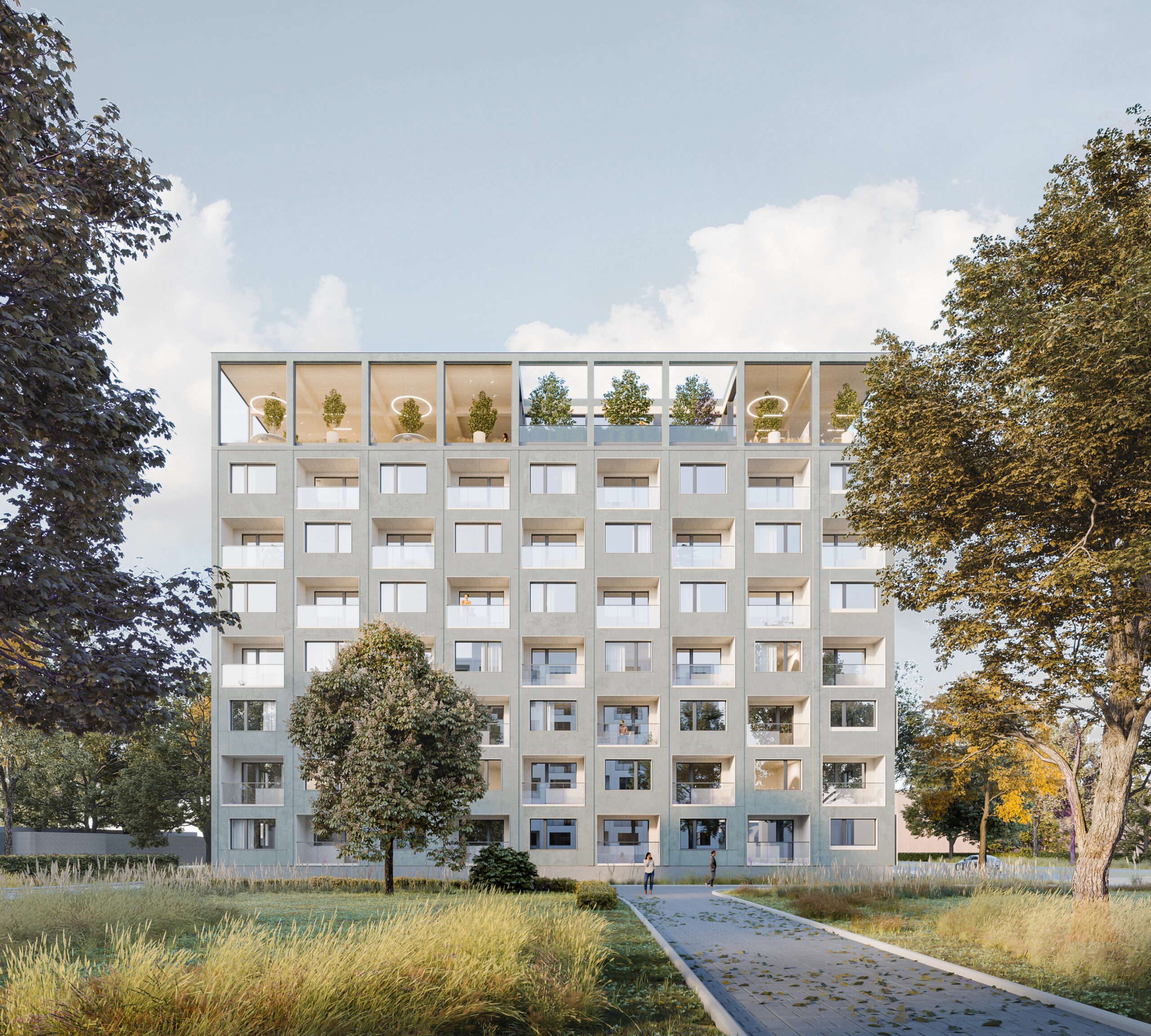
Great Tile by KXM Architects – winning work in the Tubądzin Design Awards competition.





